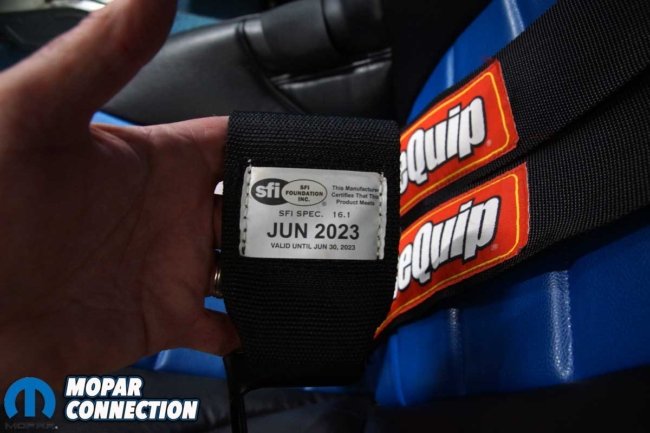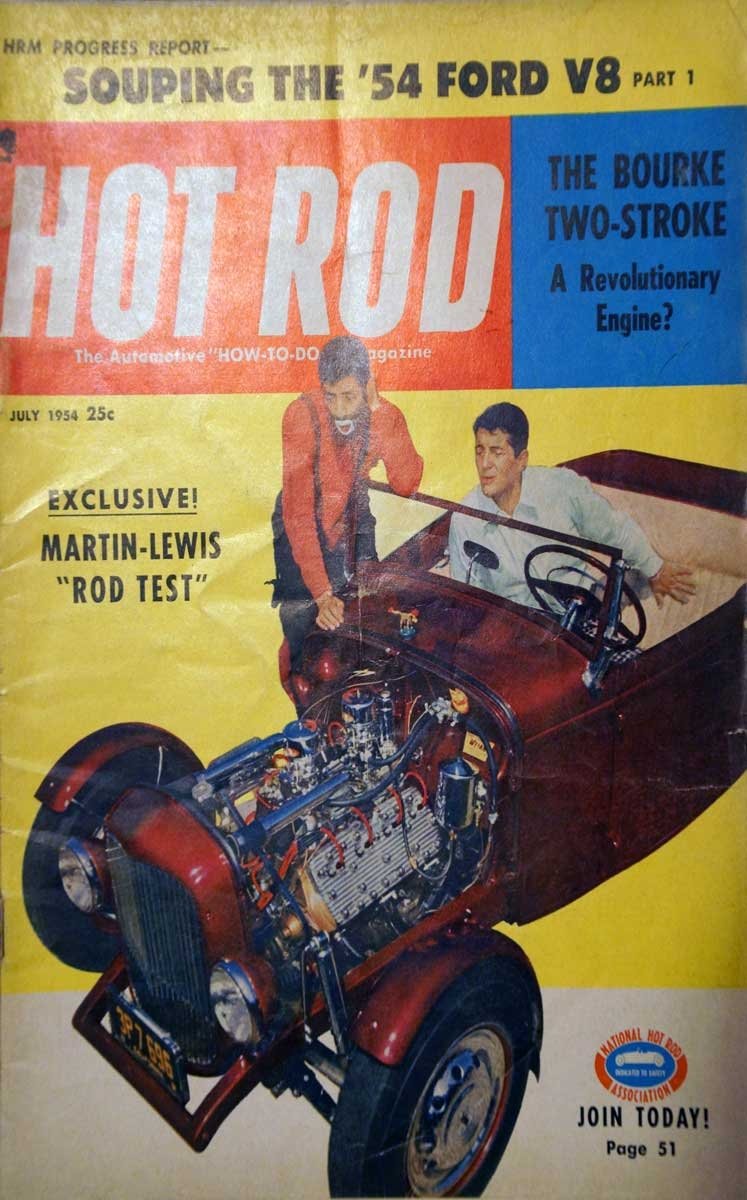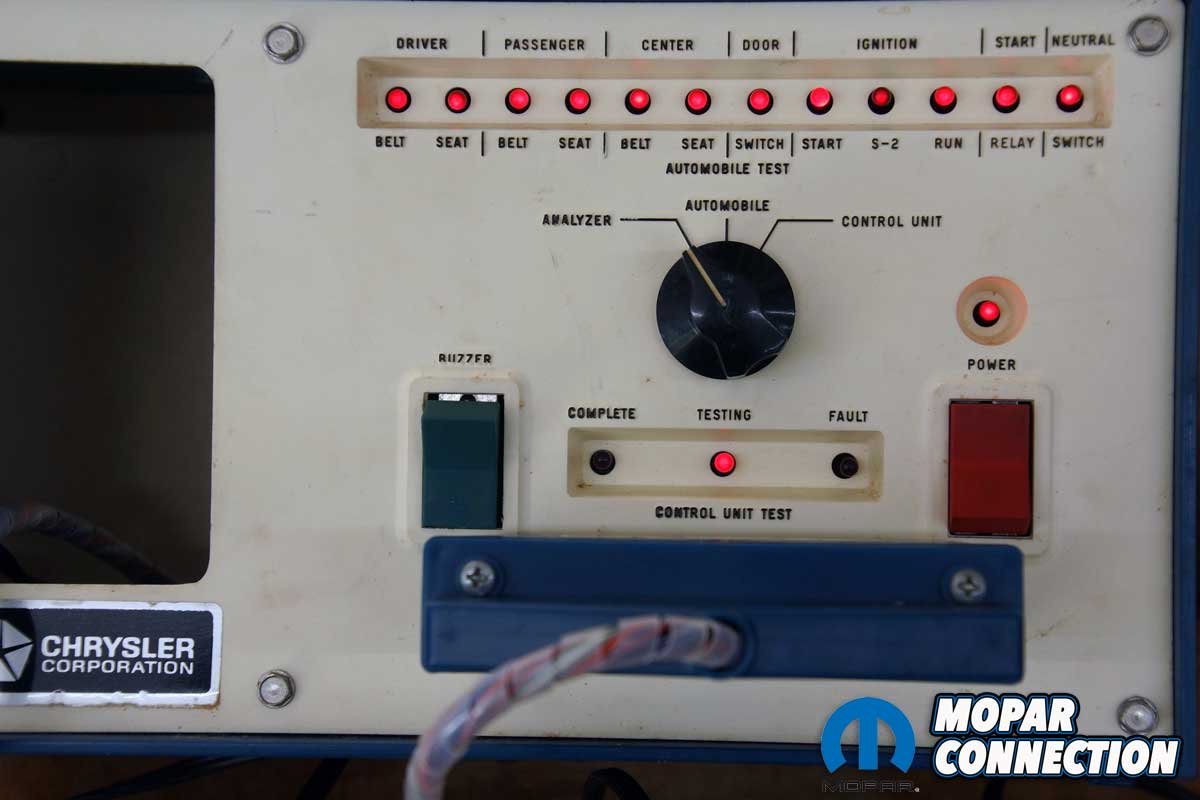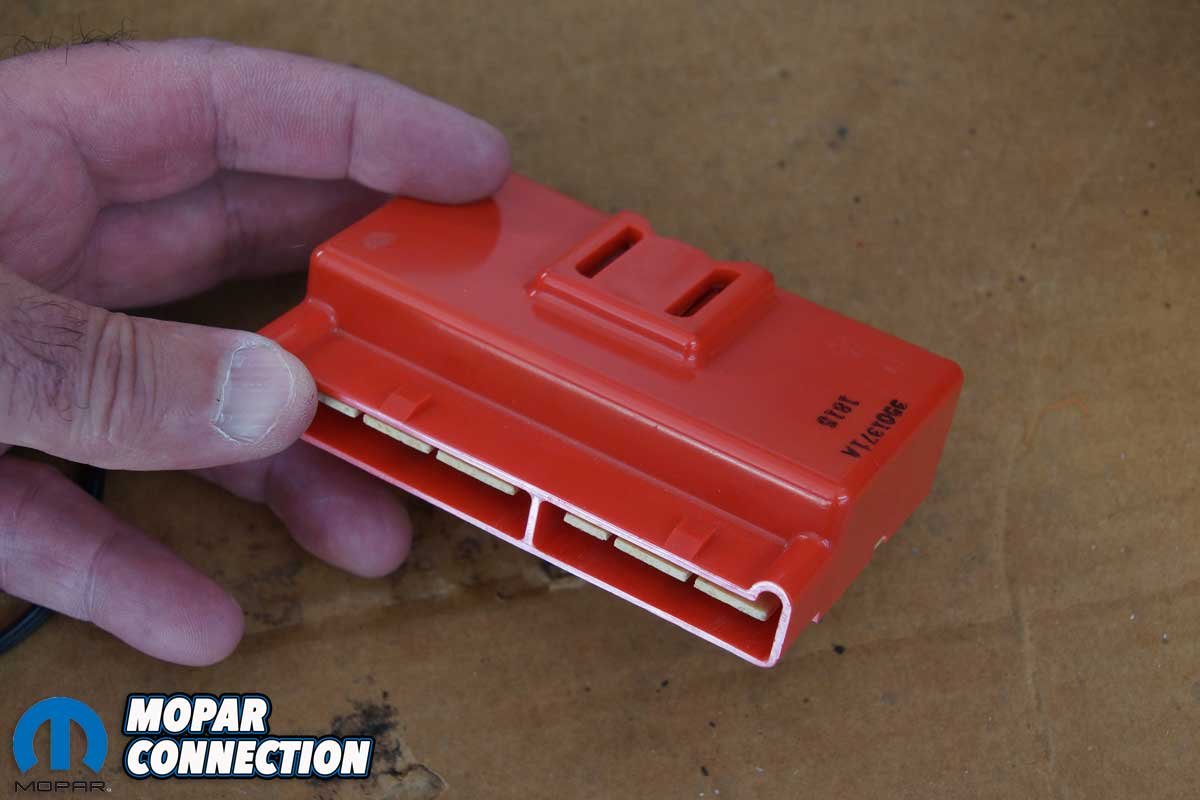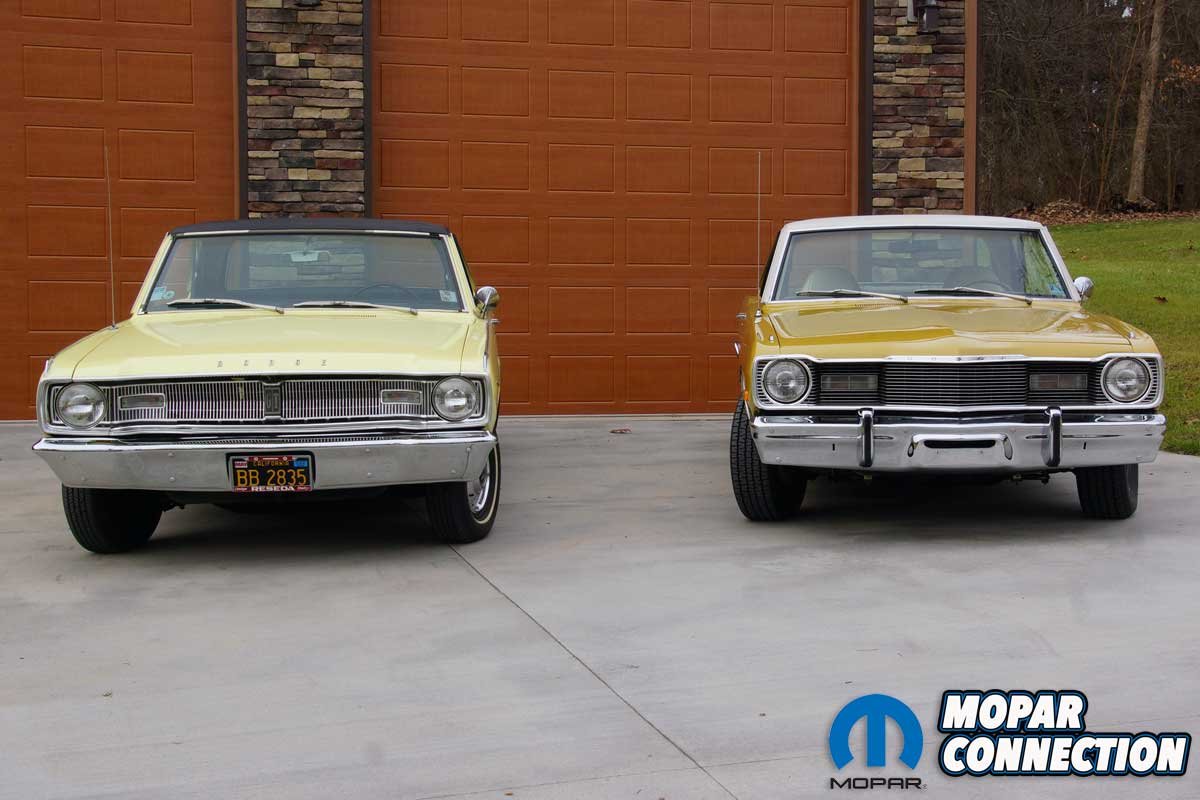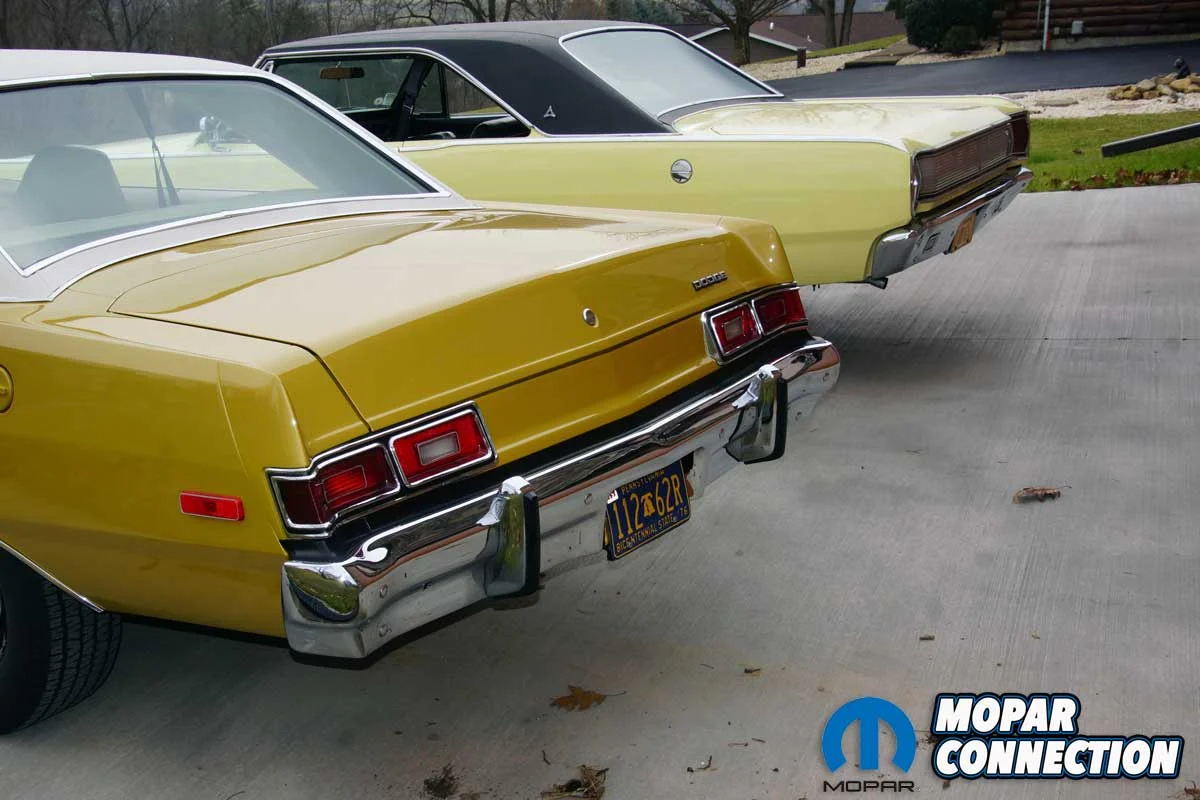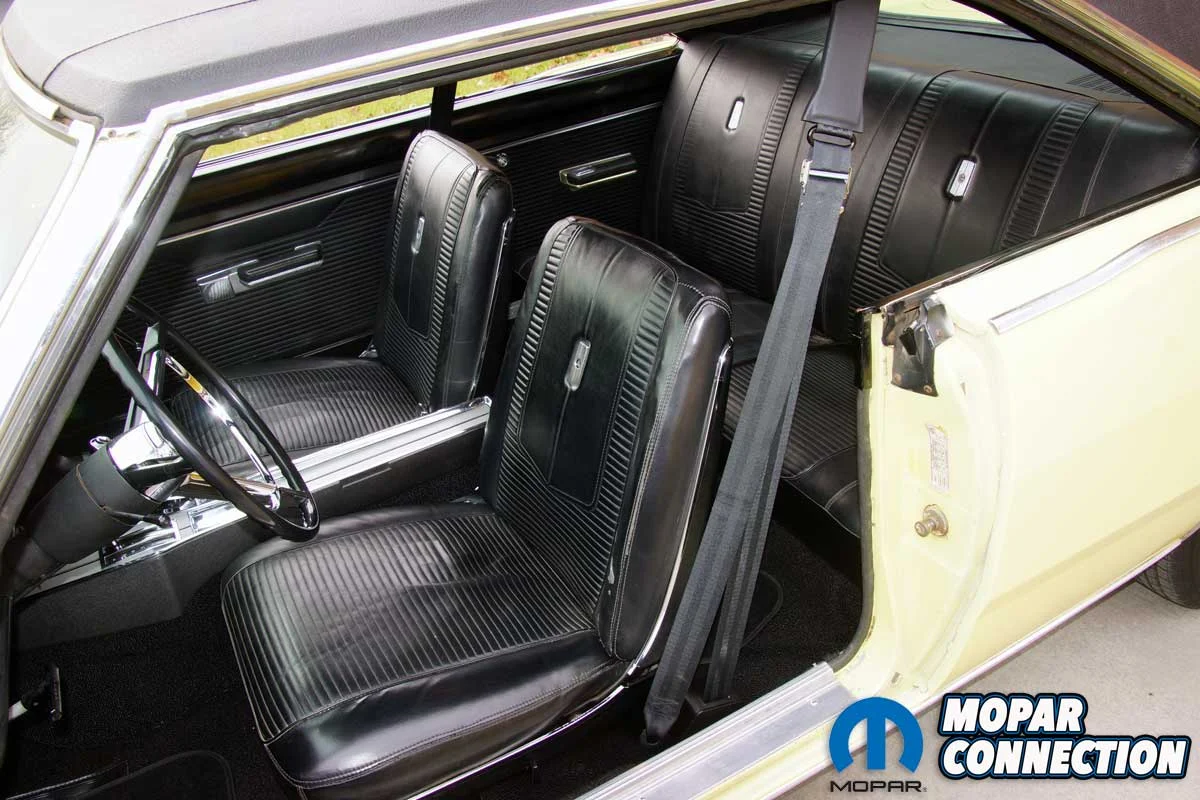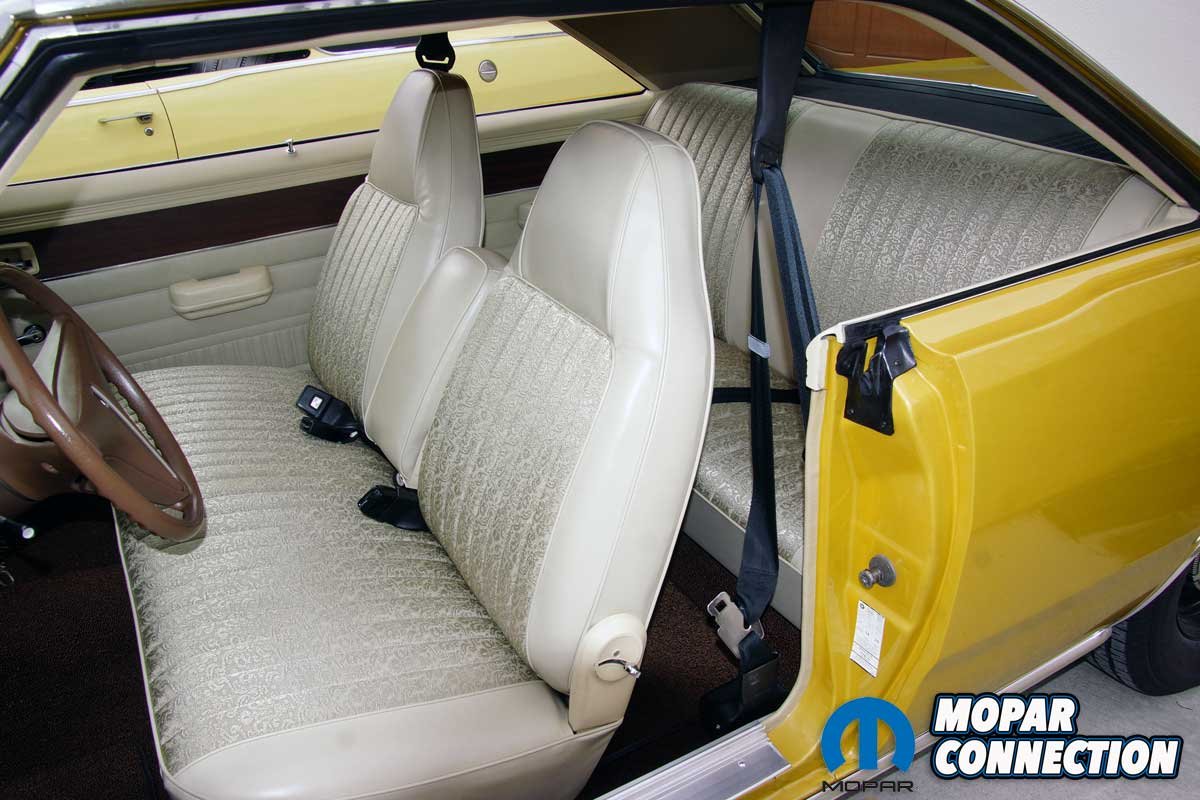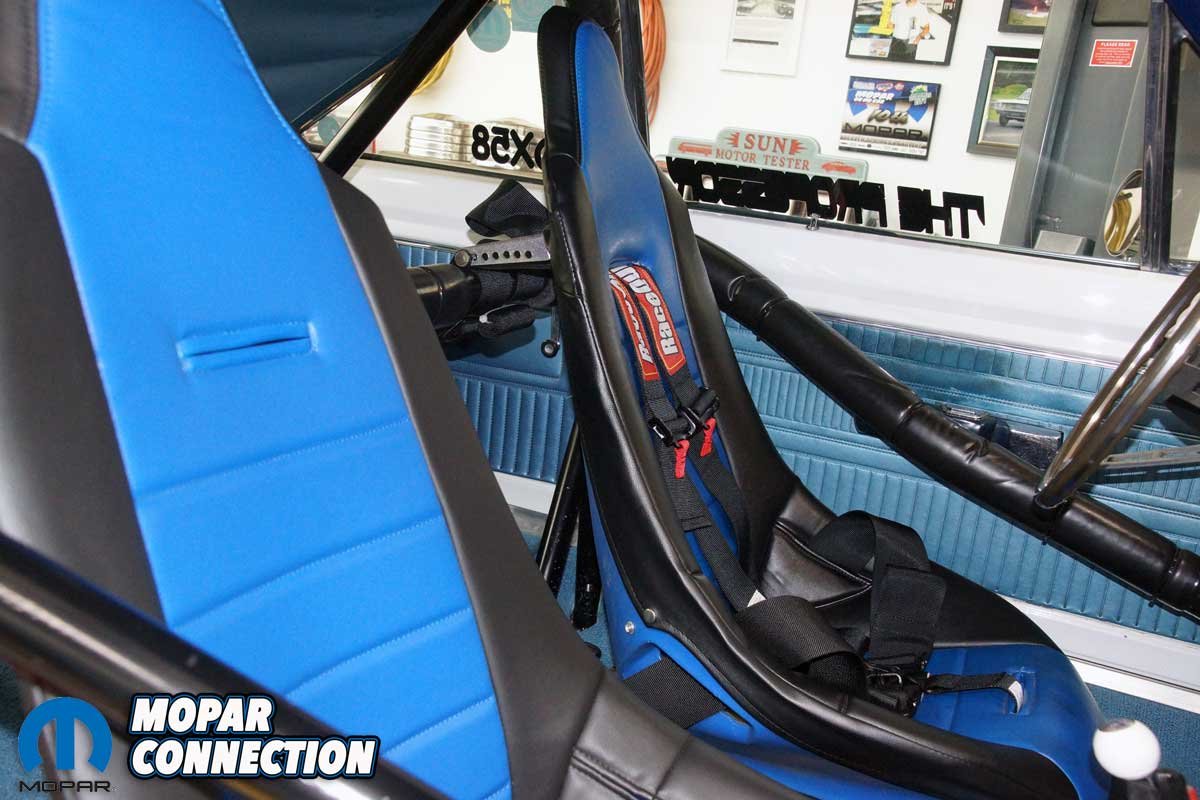
It’s a beautiful day. You could not paint a more pleasing picture if you tried. The sun is out, the windows are down, and the wind blowing in the car feels great. Your classic is running like never before, and every tune on the radio matches your upbeat mood.
Above Left: Seat belts in the 1950s were not a thought for most customers. However, some manufacturers did offer belts as an option. Aftermarket belts were available from aftermarket companies, such as Ray Brown Automotive Co. Above Right: In the July 1954 issue of Hot Rod Magazine, Ray Brown advertised its SAF-TEE BELT. On the magazine’s cover were Martin & Lewis’ “Rod Test” and the opportunity to be one of the first to join the National Hot Rod Association (NHRA).
Then in a flash, a vehicle pulls out in front of you. Even with updated brakes on your classic, there is no time to stop. It’s a solid hit. Although the other driver’s late-model vehicle folds up like a tin can, their injuries are minimal thanks to the finely designed energy dispersal zones, a 3-point seat belt, and a slew of airbags.
Above Left: When we got the ’67 Dart in 2018, it came with factory lap belts. No other option was available. Above Center: The lap belts were faded, frayed, and 51 years old. Would they work in an accident? Probably, but how well? Above Right: The rear seat came with factory-installed outboard seat belts, but the center seat belt was added after our purchase. The center seat belt was optional.
On the other hand, your sturdy 1½- to 2-ton vintage muscle car takes the hit but passes plenty of the impact energy to you and others in the vehicle. The depth of the injuries could be severe because many vintage Mopars were not equipped with seat belts. While lap belts provide some security, lap belts with front outboard seat sashes (if worn), or a 3-point belt system offers more protection. Regardless, without airbags or crumple zones coupled with 50+-year-old straps, will you and your occupants walk away?
Above Left: Year One has many seat belt offerings for multiple A-, B-, C-, and E-bodies. We selected 3-point seat belts, although Year One also has lap belts if a 3-point is not wanted. Above Right: The seat belt loop was installed where the coat hanger hook had once been. A plate was added to the roof area, and the belt was bolted in place with a shouldered bolt. A cover hid the bolt head. The belt assembly almost looks factory original.
As seen in the July 1954 Hot Rod Magazine, companies such as Ray Brown Automotive Co. developed add-on lap belts as an alternative to the seat beltless vehicles provided by the manufacturers at that time. In the early 1960s, several states began requiring outboard front lap belts (driver and passenger, but no center seat belt), and by 1965 all fifty states required front outboard lap belts to be installed in new production vehicles. However, it was not until 1968 that Congress enacted the first seat belt legislation. Discussed below are a few requirements designed to safeguard the passengers.
Above Left: Five years ago, the seat belt fit nicely over my shoulder. The strap can be in the way when a backseat rider tries to slip past the belt. It is not a problem because nobody rides in the back seat. Above Right: Five years later, the belt still fits well and provides a sense of security.
The 1968 law outlined in Federal Motor Vehicle Safety Standard (FMVSS) 208 required a front outboard lap belt with a sash belt anchored above the b-pillar. The sash was clasped separately to a buckle next to the lap belt buckle. Additionally, the FMVSS directive necessitated the rear seats to have outboard lap belts.
Although implemented by many auto manufacturers for the 1967 model year (MY), the FMVSS 204 requiring the installation of a collapsible steering column was not made law until 1968. During a frontal crash, the frame rail could bend, and the resulting action could force the steering box rearward. Without a collapsing area in the column, the shaft moved into the occupant area, and the chances of the driver being impaled on the shaft were possible. The collapsible column was designed with a 127mm “crush” area to reduce blunt force trauma to the driver.
Above Left: The Federal government added several laws to increase the safety of passengers. A 3-point belt system was required for the outboard front seat passengers as seen in this ’75 Dart. The center front seat belt was only a lap belt. Above Center: The rear seat came with three lap belts. Above Right: In 1975, the government required roof structure improvements for rollover protection. The seat belt loops were attached to the roof in a reinforced portion of the structure.
As the years passed, lawmakers added supplementary safety aspects to enhance occupant safety. In compliance with the FMVSS 202, the National Highway Traffic Safety Administration (NHTSA) made headrests mandatory in all new cars sold in the U.S. after January 1, 1969. Even today, the use of headrests continues. Modern headrests provide higher levels of head and neck whiplash protection from the effects of frontal vehicle impact recoil and rear impact collisions.
Above Left: The ’75 Dart did not have air bags or crumble zones, but it did have a padded dashboard. Above Center: In 1974, the government required a seat belt interlock system. The ’75 Dart was an early build, so it received the interlock system, which included the “Fasten Seat Belts” light. Above Right: If the Dart did not start because of the interlock system, an under-hood bypass switch could be depressed to allow one attempt (per button press) to turn over the engine.
On January 1, 1972, NHTSA required a seat belt buzzer to emit a sound when the outboard front seat occupants were not properly belted. Further, on September 1, 1972, a crash-absorbing bumper (five mile-per-hour bumpers) was required for all 1973 MY and later models. Although installed by most manufacturers since 1970 MY, the addition of side impact reinforcement bars in the doors and pillars became mandatory on January 1, 1973.
Above Left: The interlock system had a specialty tool to test the system: the cigar lighter socket powered the analyzer, and a cartridge (blue) was plugged into the onboard control unit socket for testing after removing the factory unit. Above Center: The analyzer could test itself (in this case), the automobile, or the control unit. Above Right: The control unit could be removed from the vehicle and tested by the analyzer. There were different control units depending on the transmission type (automatic or manual).
Regulations necessitated the auto manufacturers to install a single belt with three anchor points (3-point seat belts) for all front outboard seats. As the final decree of the government’s first wave of improved occupant safety, the manufacturers were forced to implement a seat belt interlock system, which would not allow the engine to start if the driver and front seat passengers (including the center seat lap belt on the bench seats) were not correctly belted in place was enacted on August 15, 1973, and required by NHTSA for all the 1974 MY passenger vehicles.
Above Left: The differences between two 4th generation Darts can be seen by looking at the front bumpers. The ’75 (right) has an energy-absorbing bumper, while the ’67 has rigid bumper brackets. Above Right: The same story at the rear, the ’75 has a 5-mph bumper, and the ’67 does not.
Above Left: The interior of the ’67 Dart does not have head restraints. They were optional, but our Dart was not ordered with them. The doors have exposed steel frames. Above Right: The ’75 Dart has factory built-in headrests, and the interior door frames are fitted with plastic.
Above Left: The ’67 door frames do not have side impact bars (behind the door panels). Above Right: The ’75 door frames have factory built-in side impact bars (also behind the door panels) that extend from the door hinges to the striker post.
While the law was remarkably successful in persuading front seat occupants to wear a seat belt (28% belt wearers in 1973 MY vs. 59% in 1974 MY), the complexity of the system and difficulties with the engine starting resulted in the public vehemently hating the interlock system. As a result, Congress rescinded the legislation on October 16, 1974. While many restrain system laws have been passed since 1974, most of our classics are covered by the previous information.
Above Left: Moving forward several decades, this 2006 Dodge Charger has multiple airbags and 3-point belts, and the doors and dash are lined with plastic rather than metal. Above Right: The rear seats have 3-point belts for all seats. The back seats have headrests for the outboard passengers.
Several years ago, your author installed a pair of Year One 3-point seat belts in a 1967 Dodge Dart for an assignment for a now-defunct Mopar magazine. The Dart was initially assembled with lap belts at the four outboard locations of the interior. However, while I was not comfortable with the 51-year-old (at the time of the story) well-worn, original front seat belts, they were discarded in favor of the updated Year One belts.
Above Left: A 2012 Cummins Turbo Ram is light years ahead of the two Darts discussed earlier. Airbags, including curtain side bags, crumple zones, and plastic-covered components, add to the occupant’s safety. Above Right: The rear seats have 3-point belts, and each seat has a headrest to improve the safety of the back seat passengers.
The installation of the 3-point belts was straightforward. The retractors were mounted in the factory seat belt location near the driver- or passenger-side rocker panel—additionally, the buckles were attached to the factory positions on the driveshaft tunnel. However, provisions for the anchor rings had to be added to the B-pillar areas.
The update began on the driver’s side by removing the coat hanger and pulling down a portion of the headliner to access the chassis structure hidden underneath. The mounting hole for the coat hanger was drilled to a ½-inch, and a plate was slipped behind the hole into the roof structure and riveted in place. The headliner was stretched over the anchor plate, and a scratch awl was used to pierce the material in this area. The anchor ring was bolted to the roof with a bolt threaded through the hole in the headliner.
Above Left: The interior of a 1969 Dart used to drag race requires specific seat belts. Above Center: The seat belts are a 5-point design, two shoulder belts, two lab belts, and a submarine belt. A unique clasp holds the belts together but disengages each strap with a single pull motion. Above Left: Racing belts have expiration dates. They must be re-webbed every two years. These belts are at the end of their service life.
While the Dart still does not have headrests, side impact bars, 5-mph bumpers, or any other safety conveniences found on modern vehicles, the installation of the belts has added a sense of protection not afforded by the lap belts (or no belts at all).
The seat belts are great, but Year One has more products than just seat belts. Check out its website for all your Mopar A-, B-, or E-body needs.
































